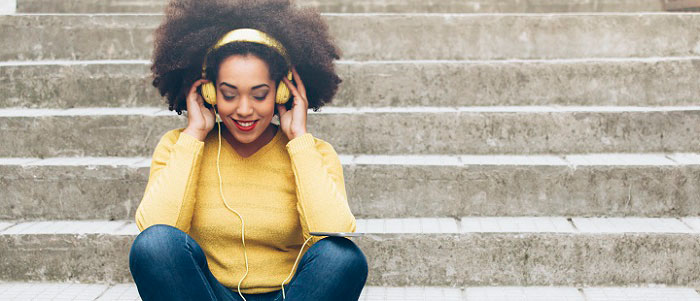
The programmatic industry has had to quickly adopt to the rise of mobile, given that in 2015 mobile eclipsed desktop as the preferred medium for internet usage (70 percent of internet usage is on a mobile device). So it was only logical that audio, which has a significant mobile footprint, was the next frontier for RTB buying. Audio includes digital radio, music streaming, podcasts, and now even voice-activated (and screenless!) systems like Amazon Alexa and Google Assistant. There a number of benefits that marketers can gain from investing in audio.
Significant audience reach (and growing!)
A 2015 report from eMarketer estimated that the number of digital audio listeners for radio and podcasts in the US alone would grow to over 180 million by 2017, and edge closer to 200 million by 2019. More premium digital audio publishers are leaning into programmatic, such as Spotify, Pandora, iHeartRadio, CBS Radio, and regional providers like France’s Deezer and Germany’s Antenna Bayern. Most of these publishers are very new to the space, keeping most of direct sales business, and only dipping their toes with programmatic display and video. Pandora, the second largest music streaming service now after Spotify, was the last large holdout before they announced their plans to expand their programmatic reach to audio.
Complementary to a marketer’s mobile strategy
Users are now spending more time on their mobile phones than on the internet. Marketers who are already invested in a mobile strategy should look to audio as a no-brainer extension to reach their audiences in these environments. Audio is innately skewed towards the mobile sphere. For music streaming, over 80 percent of activity is on mobile devices. Furthermore, while mobile gaming apps might have skewed demographics, music/radio streaming and podcasts capture a diverse array of every age demographic.
Seamless execution and measurement with existing programmatic buys
Audio is already an inherent part of IAB’s openRTB 2.4 protocol, allowing for standardization across supply touchpoints. Furthermore, the same targeting can be layered onto audio buys as display and video buys (geotargeting, demographic, contextual, device/cookie ID). Completion rates can be measured in a way similar to how videos are evaluated. Additionally, as viewability becomes widely adopted throughout the industry, “audibility” should also follow suit to better measure the effectiveness of audio and video creatives.
At a time when marketers increasingly need to reach consumers where they are across a multitude of channels and devices, the industry’s adoption of audio buying creates fresh opportunities for marketers to produce high-quality creatives that resonate with users during their daily commutes, their workdays, and their homelife.
